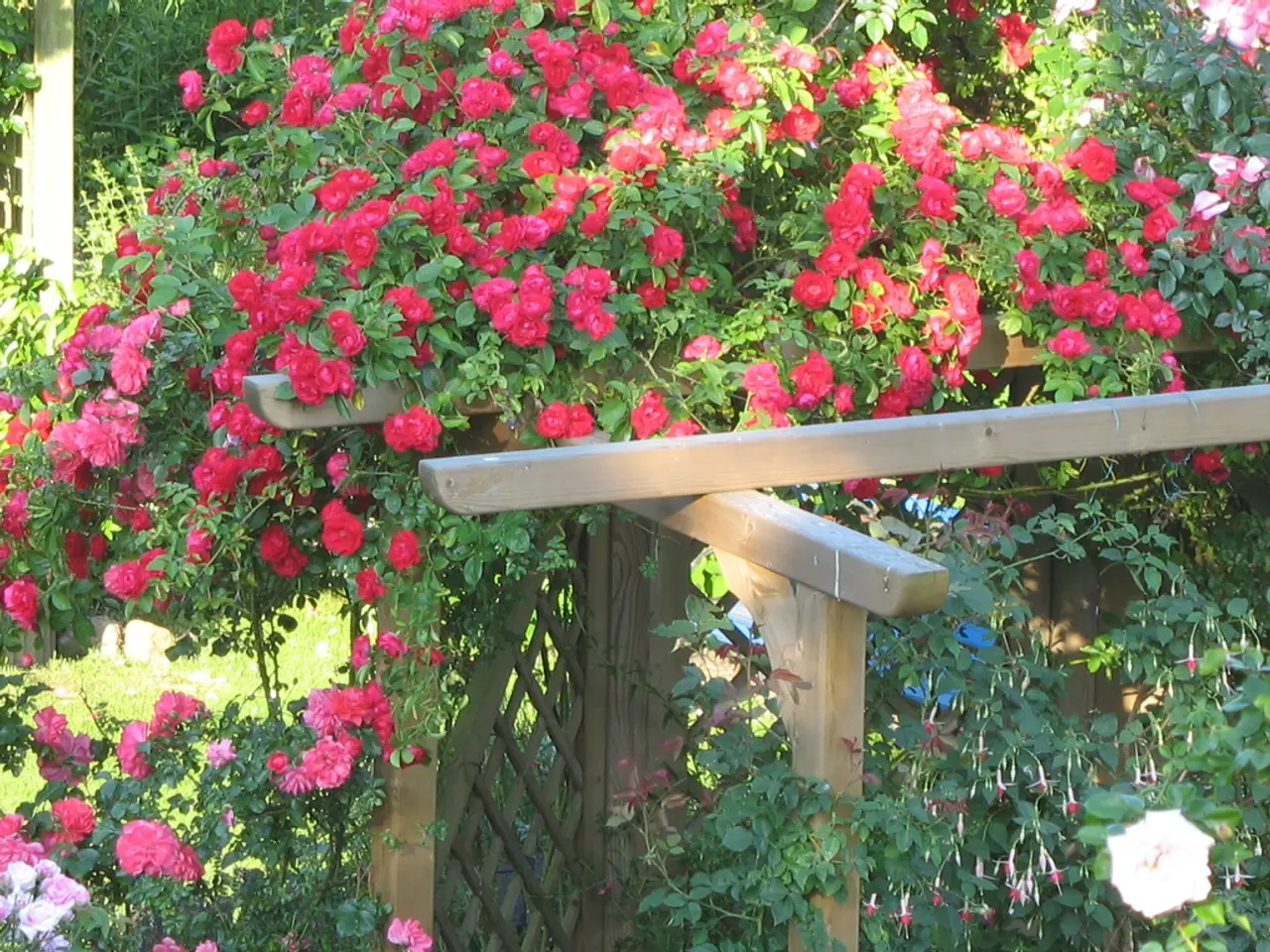Transforming limited outdoor areas into visually spacious gardens: Small-scale gardening design tips
In the heart of Devon, designer Adam Frost has created a captivating garden project that transforms a small terrace into a cosy, open space. The design offers enclosure while preserving the view, making the area feel comfortable and inviting.
One key element in Frost's design is the strategic placement of trees. These verdant structures not only offer structure and seasonal interest but also provide wildlife activity throughout the year. By carefully selecting a light-canopied, deciduous variety, Frost avoids blocking light or views, ensuring the garden remains bright and airy.
The joy of a compact garden lies in its intimacy. Every detail can be explored up-close, making each visit a new adventure. Side returns in gardens can provide unique microclimates, nooks, and crannies for various plantings, adding to the garden's charm.
In awkwardly shaped or narrow gardens, it's essential to avoid a single dominant axis to disrupt the corridor effect. Odd angles in a garden offer niches and corners for interesting plantings, seating, or vignettes, breaking up the monotony and adding character.
Restraint is crucial in small, awkward spaces. Limiting visual complexity and hard materials to two or three elements helps maintain a clean, uncluttered look. Playing with levels and creating subtle shifts in sightlines can help a compact garden unfold gradually in a sequence of distinct spaces.
Einstein's advice to spend more time understanding a problem before solving it is applicable to garden design projects. A good garden unveils itself gradually, offering a sense of discovery over time and movement through it.
Designing with light is especially important in small spaces, as it affects where the sun falls and where shadows are cast. A gentle pruning of the lower branches of a multi-stemmed tree in its dormancy, 600-800mm from ground level, allows for underplanting and sightlines.
Privacy, shade, shelter, and functional requirements should be considered before adding objects to a garden. In a garden that risks feeling long and narrow, careful design choreography prevents it from feeling like a corridor.
Introducing diagonals in a garden's layout can make it feel larger and more immersive. Paving patterns, joint placement, and junction details matter in small spaces, affecting the overall aesthetic.
Small spaces in gardens demand clarity and decisiveness about priorities. Neighbours' trees can serve as borrowed green, visually extending the garden and giving a sense of depth. Trees can be brought forward into the heart of the garden, close enough to enjoy from the house, adding a touch of nature's beauty to everyday life.
In Northern and Western hemispheres, east-facing spaces are suitable for mornings, west light is perfect for suppers and firepits, and south-facing spots get the most sun. These considerations can help maximise the potential of small gardens, ensuring they are functional and enjoyable all year round.
Read also:
- Discovering an intriguing pastime during my vacation in Jamaica, one that's accessible to all
- Mario Draghi's Anniversary in Brussels Reflects on a Year Past
- Introducing Combinations of GS1 Standards and Tracking Systems
- Exploring the least extraordinary British design concept vehicles of the 1960s, '70s, and '80s?




